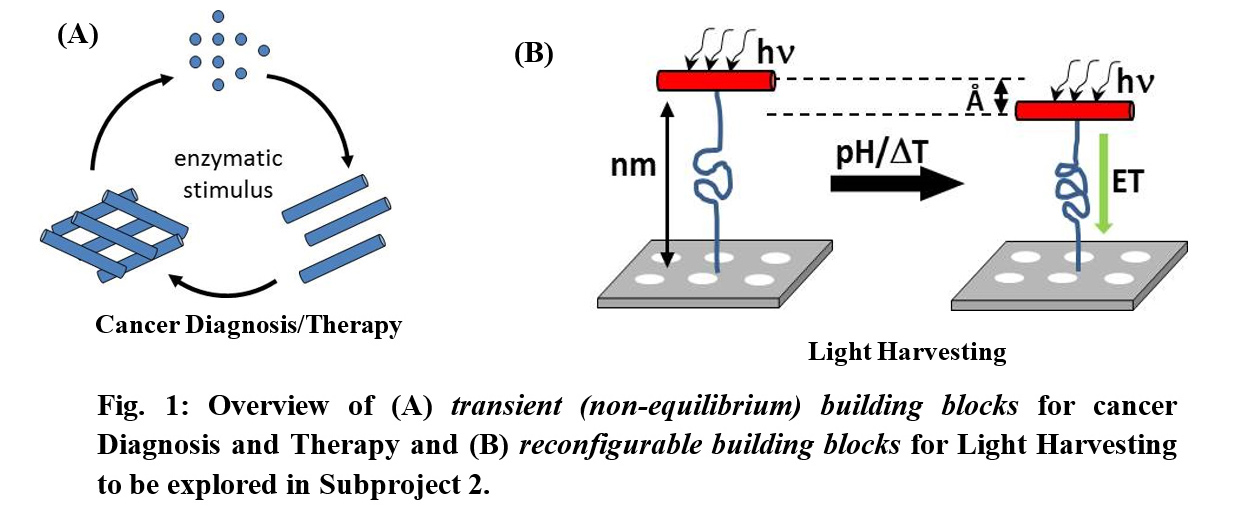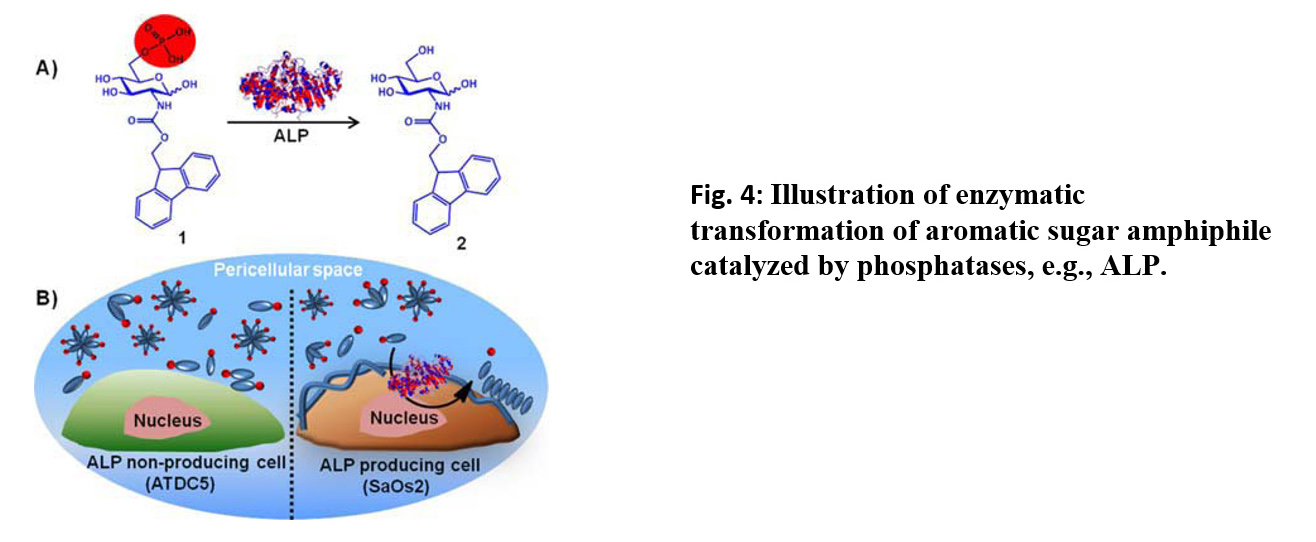Centers of Research Excellence in Science and Technology (CREST) is a National Science Foundation (NSF) program that makes resources available to enhance the research capabilities of minority-serving institutions through the establishment of centers that effectively integrate education and research.
Bio-inspired Re-configurable Materials
Leader: Ilona Kretzschmar
Members: Ubaldo Cordova-Figueroa, Alexander Couzis, Dorthe Eisele, John Lombardi, Gustavo Lopez,
Vinod Menon, Steven O’Brien, Madeline Torres, Jacob Trevino, Raymond Tu, Rein Ulijn
Collaborators:D. Graham (U. Strathclyde), G. Kahl (TU Vienna) and O. Gang (BNL), N. F. van Hulst (ICFO, Barcelona) and T. S. Balaban (Aix Marseille Universite), and C. Likos (U Vienna)
Subproject 2 explores the use of bio-inspired materials that change their application-relevant properties, or “re-configure”, by adapting to an external stimulus. Fundamental concepts are investigated in the development of new building blocks and applied to energy transfer processes as well as to cancer diagnosis and therapy.

Cluster 2.1: Design and characterization of transient and re-configurable nanostructures, explores fundamental aspects of reconfiguration in conjunction with transient and reconfigurable building blocks [1]. Its aim is to develop transient (non-equilibrium) and reconfigurable asymmetric functional nanostructures that mimic the ability of living systems to adapt and respond to new situations by changing their properties [2, 3]. We explore the behavior of transient nanostructures that respond to environmental energy inputs. External stimuli to control dynamic and transient behavior of reconfigurable anisotropic building blocks include oscillating electric, magnetic, or chemical fields [4].

Cluster 2.2: Energy and electron transfer processes in organic/inorganic hybrid nanostructures, studies fundamental energy and electron transport processes inorganic/inorganic hybrid nanostructures. Its goal is to connect biologically inspired artificial light-harvesting structures to plasmonic substrates. New architectures, based on the controlled placement of supra-molecular light harvesting (LH) nanotubes [5, 6] and nanoparticle clusters on tailored plasmonic substrates prepared by nanofabrication [7] are constructed. The aim is to better understand the impact of reconfiguration on electron and energy transfer in light harvesting architectures.

Cluster 2.3: Re-configurable structures from molecular and nanoscale building blocks for cancer diagnosis and therapy, utilizes reconfigurable structures in diagnosis and therapy of cancer. Cancer cells and their environment are characterized by a number of features that set them apart from healthy cells and tissues [8]. Thus, there are chemical gradients in the cell’s vicinity that could be explored for therapy and diagnosis. We develop nanostructures that undergo transformations to enable molecular sensing or drug delivery [9]. The aim of this work is to develop molecular and nanoscale materials that utilize local environmental cues to trigger transformations for the detection, diagnosis, or treatment of cancer.

References:
- S. Debnath, S. Roy, and R. V. Ulijn, Peptide Nanofibers with Dynamic Instability through Nonequilibrium Biocatalytic Assembly, J. Am. Chem. Soc. 135, 16789 (2013).
- V. P. Jain, C. Maldarelli, and R. S. Tu, Modeling the dynamic folding and surface-activity of a helical peptide adsorbing to a pendant bubble interface, J. Colloid Interface Sci. 331, 364 (2009).
- B. Ren, A. Ruditskiy, J. H. Song, and I. Kretzschmar, Assembly Behavior of Iron Oxide-Capped Janus Particles in a Magnetic Field, Langmuir 28, 1149 (2012).
- U. M. Cordova-Figueroa, J. F. Brady, and S. Shklyaev, Osmotic propulsion of colloidal particles via constant surface flux, Soft Matter 9, 6382 (2013).
- D. M. Eisele, J. Knoester, S. Kirstein, J. P. Rabe, and D. A. Vanden Bout, Uniform exciton fluorescence from individual molecular nanotubes immobilized on solid substrates, Nat. Nano. 4, 658 (2009).
- D. M. Eisele, C. W. Cone, E. A. Bloemsma, S. M. Vlaming, C. G. F. van der Kwaak, R. J. Silbey, M. G. Bawendi, KnoesterJ, J. P. Rabe, and D. A. Vanden Bout, Utilizing redox-chemistry to elucidate the nature of exciton transitions in supramolecular dye nanotubes, Nat. Chem. 4, 655 (2012).
- H. N. S. Krishnamoorthy, Z. Jacob, E. Narimanov, I. Kretzschmar, and V. M. Menon, Topological Transitions in Metamaterials, Science 336, 205 (2012).
- J.-O. You and D. T. Auguste, Feedback-regulated paclitaxel delivery based on poly(N,N-dimethylaminoethyl methacrylate-co-2-hydroxyethyl methacrylate) nanoparticles, Biomaterials 29, 1950 (2008).
- R. A. Pires, Y. M. Abul-Haija, D. S. Costa, R. Novoa-Carballal, R. L. Reis, R. V. Ulijn, and I. Pashkuleva, Controlling Cancer Cell Fate Using Localized Biocatalytic Self-Assembly of an Aromatic Carbohydrate Amphiphile, J. Am. Chem. Soc. 137, 576 (2015).